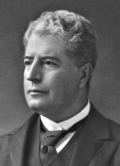
Queen Victoria was the monarch of the United Kingdom of Great Britain and Ireland and of the British Empire from 20 June 1837 until her death on 22 January 1901. At the start of her reign, responsible government outside of the United Kingdom itself was unknown, but starting in the 1840s this would change.[ citation needed ]
Contents
- Australia
- Canada
- Pre-Confederation
- Post-Confederation 1867-1901
- Cape Colony
- New Zealand
- United Kingdom
- See also
- References
During her reign Victoria was served by well over 33 prime ministers: 15 from New Zealand, 10 from the United Kingdom, 7 from the Dominion of Canada, and 1 from Australia.





















































